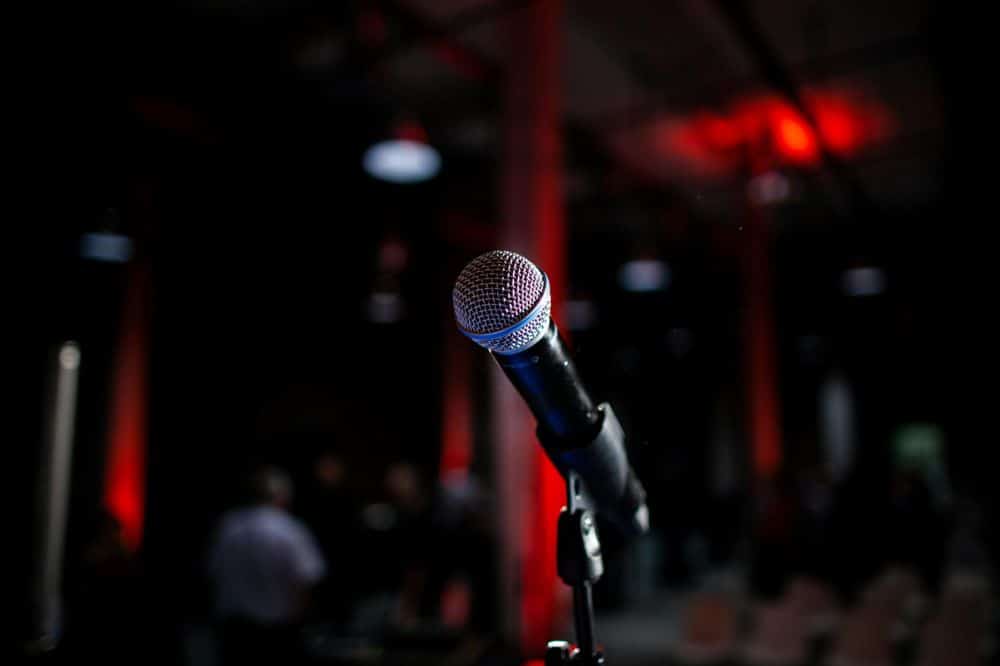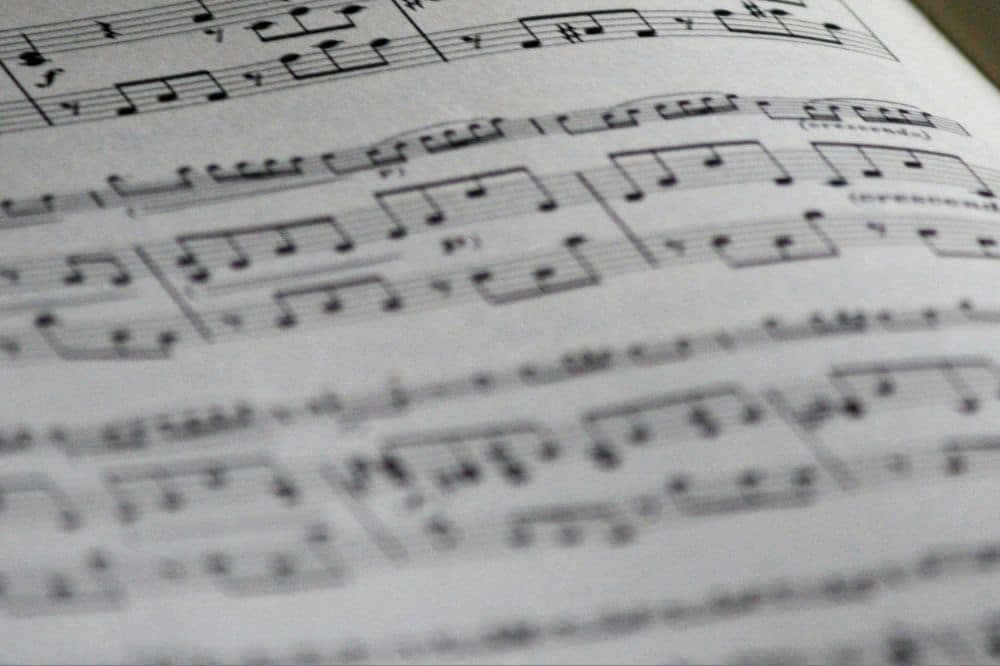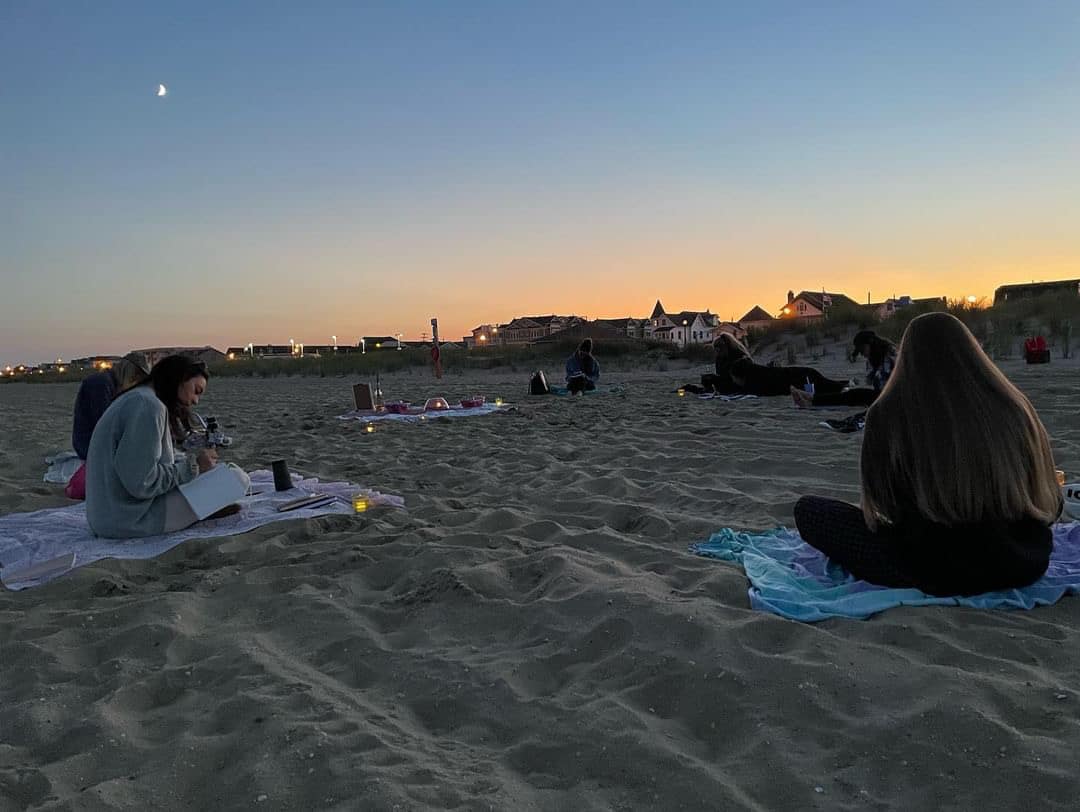
- This event has passed.
Downtown Wildwood Farmers Market
April 26 @ 8:00 am - 12:30 pm


Over 85 vendors offering fresh farm goods including produce, plants, cut flowers & honey.
also appears in
52 Events at the Jersey Shore This Weekend | June 19-22, 2025
The Jersey Shore is known for its beaches, and while The Jersey Shore Girl can contest that some local spots really are great, there's so much more to do here than just the beach. This weekend at the shore, for example, there's a long list of activities that don't involve getting wet, like golden hour at Salvation Rooftop, trivia night at Fleur de Mer, an open mic night at The Asbury Hotel, and more. Read on to see the list of Jersey Shore events happening this weekend, June 19th through June 22nd, 2025. Don’t forget: you can submit your community events to our calendar HERE.
Disclaimer: This is a community resource. Submit events HERE and view the full calendar HERE. The Jersey Shore Girl is not affiliated with hosting unless explicitly stated.


East Coast Tiki Tours
Captains Inn Marina 304 East Lacey Road, Forked River

East Coast Tiki Tours is a custom boat tour experience. Whether you're trying to put together a casual gathering of friends, want to celebrate a work or personal milestone, or you're just trying to unwind from the week, East Coast Tiki Tours personalizes a trip through Forked River that fits the vibe of your group. Here's how it works: Bring your own food and beverages — East Coast Tiki Tours has coolers to keep everything fresh throughout the trip. The tiki boat also features misters (ideal for those hot New Jersey summer days) and Bluetooth speakers (so don't forget a playlist). East Coast Tiki Tours can accommodate up to six passengers, and its boat is considerably larger than typical six-person vessels, providing more space for dancing, enjoying the views, and celebrating. Use code TheJerseyShoreGirl to get $50 off an East Coast Tiki Tour.

8 events found.
Live Music at Leggets
Leggett's Sand Bar
217 1st Avenue, Manasquan, NJ
Every day of the week there is live music at Legget's with each day featuring a different act. Check out their calendar to see who is playing each night.
Free
Chill Here Now at The Asbury Hotel
The Asbury Hotel
210 Fifth Avenue, Asbury Park
Take a dip in the refreshing pool and relax in the sun. The bar and food truck will be open slinging drinks & tacos. Enjoy panoramic views from the Salvation…
$30
Foodie Farmer’s Market at Calgo Gardens
Calgo Gardens
462 Adelphia Road, Freehold
Hosted by In Bloom Gardens & Nursery, this market is a celebration of fresh flavors, local artisans, and community spirit.
5 Shows Nightly at The Music Man Singing Ice Cream Shoppe
When you visit The Music Man, your experience in our Shoppe will last about 45 minutes and you will be able to eat ice cream with a show.
Free
Golden Hour at Salvation Rooftop
The Asbury Hotel
210 Fifth Avenue, Asbury Park
Join Salvation Rooftop at The Asbury Monday-Friday from 6PM-7PM all summer long for Golden Hour. Must be 21+ to enter and have a valid ID.
Free
New Girl Trivia Night at Fleur de Mer
Fleur de Mer Flower Bar + Gift Boutique
3316 Sunset Avenue #8, Ocean Township, NJ
Think you know everything about Jess, Nick, Schmidt, and the gang? Put your knowledge to the test during a fun-filled night of themed trivia at Fleur de Mer. Everyone goes…
$28
Open Mic with Jason Portizo
The Asbury Hotel
210 Fifth Avenue, Asbury Park
Stop by the Soundbooth in The Asbury Hotel for an open mic night hosted by Jason Portizo.
Free
Open Mic Comedy Night at Count Basie Center for the Arts
Count Basie Center for the Arts
99 Monmouth Street, Red Bank, NJ
Hosted by real comedians and starring aspiring comedians, enjoy open mic comedy night at Count Basie Center for the Arts.

11 events found.
Live Music at Leggets
Leggett's Sand Bar
217 1st Avenue, Manasquan, NJ
Every day of the week there is live music at Legget's with each day featuring a different act. Check out their calendar to see who is playing each night.
Free
Woody’s Roadside Yappy Hour
Woodys Roadside
105 Academy Street, Farmingdale, NJ
Food + Drinks + Pups! This happy hour event is dog-friendly and occurs every Friday.
Free
Chill Here Now at The Asbury Hotel
The Asbury Hotel
210 Fifth Avenue, Asbury Park
Take a dip in the refreshing pool and relax in the sun. The bar and food truck will be open slinging drinks & tacos. Enjoy panoramic views from the Salvation…
$30
Distillery Tour
Nauti Spirits Distillery
916 Shunpike Road, Cape May, NJ
Go on a behind-the-scenes tour of Nauti Spirits Distillery to learn about the farm + production facilities required to make a variety of hand-crafted spirits.
$18
Summer Solstice Party at The Asbury Hotel
The Asbury Hotel
210 Fifth Avenue, Asbury Park
This free event will be packed with sunshine, good vibes, and endless fun. Attendees can expect live DJs spinning summer beats, food and drink specials, and a curated selection of…
Free
Country Night Fridays
Ocean Casino + Resort
500 Boardwalk, Atlantic City, NJ
Enjoy happy hour specials with live entertainment alongside boots, beers, + bourbon at this weekly Country Night Fridays event.
Free
5 Shows Nightly at The Music Man Singing Ice Cream Shoppe
When you visit The Music Man, your experience in our Shoppe will last about 45 minutes and you will be able to eat ice cream with a show.
Free
Yappy Hour at Wave Resort
Wave Resort
110 Ocean Ave North, Long Branch
Bring your pups to Wave Resort and enjoy cocktails with your four-legged friends every Friday at Wave Resort.
Free
Eyes of the Wild Animal Show
Jenkinson's Boardwalk
300 Ocean Avenue North, Point Pleasant, NJ
Fun, comedy and education collide in this program, featuring up close and personal encounters with some of our favorite planet's most fascinating creatures.
Golden Hour at Salvation Rooftop
The Asbury Hotel
210 Fifth Avenue, Asbury Park
Join Salvation Rooftop at The Asbury Monday-Friday from 6PM-7PM all summer long for Golden Hour. Must be 21+ to enter and have a valid ID.
Free
Friday Night Beats
The Beach Gallery Bar
260 Beach Way Avenue, Keansburg, NJ
Kickstart your weekend with Friday Night Beats. Enjoy live DJ sets and free entry, with cabana rentals available as well.
Free

10 events found.
Live Music at Leggets
Leggett's Sand Bar
217 1st Avenue, Manasquan, NJ
Every day of the week there is live music at Legget's with each day featuring a different act. Check out their calendar to see who is playing each night.
Free
Downtown Wildwood Farmers Market
Downtown Wildwood Farmers Market
3400 Pacific Avenue, Wildwood, NJ
Over 85 vendors offering fresh farm goods including produce, plants, cut flowers & honey.
Brick Farmers Market at Windward Beach
Windward Beach
265 Princeton Avenue, Brick Township, NJ
The Brick Farmers Market returns to Windward Beach on May 3rd and runs until October 4th. The hours are 8:30AM to 1:30PM. The Brick Farmers Market features nearly 60 vendors…
Sip and Support: A Victorian Tea for a Modern Mission
Mathis House
600 Main Street, Toms River, NJ
This event, called a Sip and Support, benefits Pinwheel Place, New Jersey’s only crisis nursery. Enjoy a five course Victorian tea service and an afternoon of community impact at the…
$60
North to Shore Festival Market at Convention Hall
Asbury Park Convention Hall
1300 Ocean Avenue North, Asbury Park, NJ
Join for the third annual Asbury Park Bazaar x The Prudential North to Shore Festival. There will be crafts, vendors, food, and libations.
Chill Here Now at The Asbury Hotel
The Asbury Hotel
210 Fifth Avenue, Asbury Park
Take a dip in the refreshing pool and relax in the sun. The bar and food truck will be open slinging drinks & tacos. Enjoy panoramic views from the Salvation…
$30
5 Shows Nightly at The Music Man Singing Ice Cream Shoppe
When you visit The Music Man, your experience in our Shoppe will last about 45 minutes and you will be able to eat ice cream with a show.
Free
North2Shore Festival: SOULcase Community Night at Konscious Community Center
Konscious Community Center
631 Lake Avenue, Asbury Park, NJ
Join the KYDS family in Asbury Park for a family-friendly night filled with music, art, and community vibes. We’ll be featuring a live performance from Küf Knotz + Christine Elise,…
FC Monmouth Women’s Home Match vs Penn Fusion SA at Count Basie Park
Count Basie Park
Henry Street, Red Bank, NJ
Locals can come out and support the FC Monmouth women's team as they take on Penn Fusion SA at Count Basie Park
$10
Saturday Show – Albert Music Hall
Albert Music Hall
131 Wells Mill Road, Waretown
Five bands will play 30 minute sets of various music.
$6

7 events found.
Live Music at Leggets
Leggett's Sand Bar
217 1st Avenue, Manasquan, NJ
Every day of the week there is live music at Legget's with each day featuring a different act. Check out their calendar to see who is playing each night.
Free
1st Annual Cookie + Stanley Chera a”h and Cheryl Diamond Jersey Shore 5K Cancer Schlep at Kassin Beach Club
Kassin Beach Club
10 Ocean Place, Loch Arbour, NJ
The Cookie + Stanley Chera a"h and Cheryl Diamond Jersey Shore 5K Cancer Schlep brings together hundreds of participants from the county, ranging in age from 5 - 90 years…
$50
Springsteen on Sunday
Bar Anticipation
703 16th Avenue, Lake Como, NJ
Tom Cunningham hosts the world-famous "Springsteen on Sunday," every Sunday from 9 AM to 11 AM.
Free
North to Shore Festival Market at Convention Hall
Asbury Park Convention Hall
1300 Ocean Avenue North, Asbury Park, NJ
Join for the third annual Asbury Park Bazaar x The Prudential North to Shore Festival. There will be crafts, vendors, food, and libations.
Chill Here Now at The Asbury Hotel
The Asbury Hotel
210 Fifth Avenue, Asbury Park
Take a dip in the refreshing pool and relax in the sun. The bar and food truck will be open slinging drinks & tacos. Enjoy panoramic views from the Salvation…
$30
5 Shows Nightly at The Music Man Singing Ice Cream Shoppe
When you visit The Music Man, your experience in our Shoppe will last about 45 minutes and you will be able to eat ice cream with a show.
Free
FC Monmouth Women’s Home Match vs Real Central NJ
Count Basie Park
Henry Street, Red Bank, NJ
The FC Monmouth women's team will take on Real Central NJ at Count Basie Park.
$10

18 events found.
Mahjong 101 + 102 at WonderLand+Sea
WonderLand+Sea
132 Main Street, Manasquan, NJ
The beginner 101 class takes place from 11AM-2PM, and the advanced 102 class takes place from 4:30PM-7:30PM.
$50
Magic on the Beach
Jenkinson's Boardwalk
300 Ocean Avenue North, Point Pleasant, NJ
Prepared to be amazed this summer as we bring you Magic on the Beach. With audience participation, comedy & magic, this event is sure to be a hit for the…
Free
Asynchronous Book Club at 3BR Distillery
3BR Distillery
7 Main Street, Keyport, NJ
Wolfe + Kron Books presents another meeting of the Asynchronous Book Club at 3BR Distillery. Attendees will get a notecard to write down 3-5 books they've read, then will be…
Free
Clothing Swap Party at Bradley Beach
Bradley Beach
Bradley Beach, NJ
This clothing swap is hosted by Shore Good Reads + Shore Alignment. Attendees can bring any clothing items, accessories, and shoes to swap. The event will be held at the…
Free
Piano Party with Bob Egan
The Asbury Hotel
210 Fifth Avenue, Asbury Park
Bob Egan will be playing the piano every Tuesday at Soundbooth in the Asbury Park Hotel, where everyone is invited to come sing along.
Free
Live Music at Leggets
Leggett's Sand Bar
217 1st Avenue, Manasquan, NJ
Every day of the week there is live music at Legget's with each day featuring a different act. Check out their calendar to see who is playing each night.
Free
Chill Here Now at The Asbury Hotel
The Asbury Hotel
210 Fifth Avenue, Asbury Park
Take a dip in the refreshing pool and relax in the sun. The bar and food truck will be open slinging drinks & tacos. Enjoy panoramic views from the Salvation…
$30
Sea Bright Farmers Market
1097 Ocean Avenue
1097 Ocean Avenue, Sea Bright, NJ
Every Wednesday at the Public Beach Lot in Sea Bright, shop fresh produce, sweet and savory baked goods, fresh-cut flowers, locally baked sourdough, handmade crafts and trinkets, and more while…
The Surfing Pig Yappy Hour
The Surfing Pig
231 West 10th Avenue, North Wildwood, NJ
The Surfing Pig announced their new 'Yappy Hour,' held every Wednesday from 3-6 pm. This event is perfect for dog owners looking to enjoy fun adventures with their pets.
Free
5 Shows Nightly at The Music Man Singing Ice Cream Shoppe
When you visit The Music Man, your experience in our Shoppe will last about 45 minutes and you will be able to eat ice cream with a show.
Free
Golden Hour at Salvation Rooftop
The Asbury Hotel
210 Fifth Avenue, Asbury Park
Join Salvation Rooftop at The Asbury Monday-Friday from 6PM-7PM all summer long for Golden Hour. Must be 21+ to enter and have a valid ID.
Free
Sandy Mack Jam Band
The Asbury Hotel
210 Fifth Avenue, Asbury Park
Stop by the Soundbooth every Wednesday to enjoy live music by the Sand Mack Jam Band.
Free
Café Artiste
The Jersey Shore Arts Center
66 South Main Street, Ocean Grove, NJ
Café Artiste is the listening room for original music. This event is located on the 3rd floor of The Jersey Shore Arts Center with plenty of free parking in front…
$5
Shore Alignment Journaling Club at Bradley Beach
Bradley Beach
Bradley Beach, NJ
Shore Alignment is a beach journaling club and is open to everyone. All locals need to bring is their journal and a towel/chair. Prompts will be given to attendees, and…
Mermaid Meet and Greet at Jenkinson’s Aquarium
Jenkinson's Aquarium
300 Ocean Avenue, Point Pleasant, NJ
The mermaid is out of the water for a meet & greet in the Aquarium classroom at Jenkinson's.
The Jukebox Legends: Summer Concert Series
Jenkinson's Boardwalk
300 Ocean Avenue North, Point Pleasant, NJ
Get ready to groove all summer long at Jenkinson's Boardwalk with the Summer Concert Series. Join June 25th featuring The Jukebox Legends, combining classic and nostalgic hits.
Free
Reef and Barrel Trivia Night
Reef and Barrel Beach Bar + Grill
153 Sea Girt Avenue, Manasquan, NJ
Fun and engaging trivia night every Wednesday at 7:00 PM.
Free
Country Wednesdays at Jenks Club
Jenkinson's Club
300 Ocean Avenue North, Point Pleasant, NJ
Kick up your boots for Country Wednesdays at Jenks Club—doors open at 7 pm, show starts at 8 pm. Check out our full lineup on jenksclub.com and follow us on social media.

4 events found.
Juneteenth Celebration Concert at Taylor Pavilion
Taylor Pavilion
500 Ocean Avenue, Belmar, NJ
Bring your family and friends to celebrate freedom, culture, and community in a meaningful and joyous way. The event is free and open to the public.
Brick Farmers Market at Windward Beach
Windward Beach
265 Princeton Avenue, Brick Township, NJ
The Brick Farmers Market returns to Windward Beach on May 3rd and runs until October 4th. The hours are 8:30AM to 1:30PM. The Brick Farmers Market features nearly 60 vendors…
Clothing Swap Party at Bradley Beach
Bradley Beach
Bradley Beach, NJ
This clothing swap is hosted by Shore Good Reads + Shore Alignment. Attendees can bring any clothing items, accessories, and shoes to swap. The event will be held at the…
Free
Family Wednesdays at Jenkinson’s Boardwalk
Jenkinson's Boardwalk
300 Ocean Avenue North, Point Pleasant, NJ
Make Wednesdays your go-to for family fun at Jenkinson’s Boardwalk—parents and grandparents ride and play free with a paid child admission. From 12–5pm every Wednesday, enjoy free access to the…

A Beach Hater’s Guide to the Jersey Shore in the Summer
A Jersey Shore Transit + Rideshare Guide to Getting Around
Where to Watch Fireworks at the Jersey Shore for Summer 2025
Have an event you’d like included in our guide? You can submit it HERE.
Follow @thejerseyshoregirl_ on Instagram to keep up with all the fun happenings around the area.
Details
- Date:
- April 26
- Time:
-
8:00 am - 12:30 pm
- Series:
- Downtown Wildwood Farmers Market Season Kick-Off
- Event Category:
- Entertainment
Venue
- Downtown Wildwood Farmers Market
-
3400 Pacific Avenue
Wildwood, NJ 08260 United States + Google Map







































